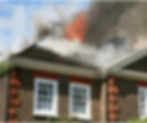- 2 minutes ago
- 2 min read

Before you kick off the holiday season, we encourage you to review these fireplace and chimney safety reminders with your family. A little preparation goes a long way in keeping your home warm and safe this winter.
1. Schedule a chimney cleaning and inspection.
If you haven’t done so already, schedule your annual chimney cleaning and inspection so we can check for creosote buildup, cracks, blockages, or other hazards that could make your fireplace unsafe. Starting the season with a clean, well-maintained chimney not only protects your home but also helps your fireplace operate more efficiently.
2. Only burn seasoned firewood.
Fresh-cut or damp wood produces heavy smoke and accelerates creosote buildup in the chimney. Stick with well-seasoned hardwoods—such as oak, birch, or maple—for a hotter, cleaner burn that helps keep your chimney healthier throughout the winter.
3. Keep holiday décor at a safe distance.
Garlands, stockings, and other festive decorations look great around the hearth, but they should never be too close to the flames. Keep all décor at least three feet away to prevent accidental ignition.
4. Toss—don’t burn— your wrapping paper.
Wrapping paper burns too quickly and can send embers up the flue, potentially igniting creosote deposits. Dyed and inked paper can also release harmful fumes. Toss your gift wrap in the trash or recycling bin instead.
5. Never leave a fire unattended.
While it may be tempting to walk away from a dwindling fire, never leave your fireplace unattended until the flames and embers are fully extinguished.
Tip: Spread the coals with your fireplace tools so they cool more quickly.
6. Don’t overfill your firebox.
Well-meaning guests may try to add extra logs to “keep the fire going,” but too much fuel can create excessive heat and stress your chimney system. Overloaded fires increase creosote production and can damage brick or mortar. A moderate, controlled fire is safer and just as enjoyable.
7. Dispose of ashes safely.
Because fireplace ashes can retain heat well after the flames have disappeared, it’s essential to remove and store them properly. Reminder: Always place ashes in a metal container with a tight-fitting lid. Be sure to store it away from your home, garage, or any other structure that could catch fire.
8. Test smoke alarms and carbon monoxide detectors.
Test your smoke alarms and carbon monoxide detectors to ensure they are working and replace batteries as needed. Keep a fire extinguisher within easy reach and make sure everyone at home knows its location and how to use it.
9. Get a fireplace screen.
If you don’t have one already, place a screen in front of your fireplace to contain sparks and keep children and pets a safe distance from the hearth.
Stay Warm and Safe This Season
Following these fireplace and chimney safety tips will help keep your family and guests warm and safe this holiday season. If you have questions or need to schedule an annual chimney cleaning and inspection, contact our CSIA-certified chimney experts at Admiralty Chimney. We proudly serve homeowners in Southern New Hampshire and Northern Massachusetts.

